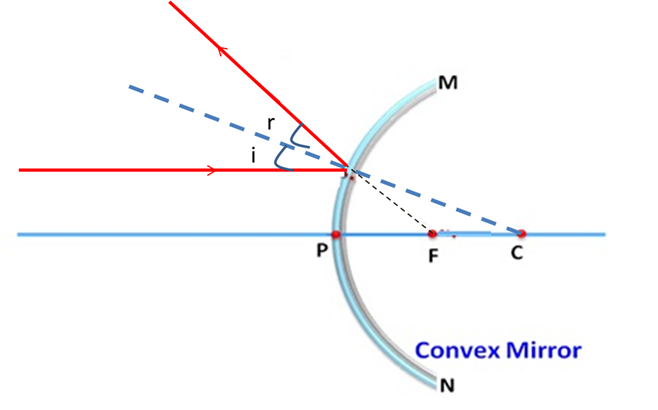Science:2014:CBSE:[Delhi]:Set-II
To Access the full content, Please Purchase
-
Q1
Name the information source for making proteins in the cells.
Marks:1View AnswerAnswer:
DNA present in cell nucleus is the information source for making proteins in cells.
-
Q2
List two measures that you would suggest for the better management of water resources.
Marks:1View AnswerAnswer:
Two measures for the better management of water resources are:
• Rainwater harvesting
• Construction of dams -
Q3
Write the number of horizontal rows in the modern periodic table. What are these rows called?
Marks:1View AnswerAnswer:
There are seven horizontal rows in the modern periodic table. These rows are called periods.
-
Q4
List four modes of asexual reproduction.
Marks:2View AnswerAnswer:
Four modes of asexual reproduction are:
(1) Binary Fission
In this mode of reproduction, a single cell divides into two halves. For example: bacteria and Amoeba.
(2) Budding
In this process, new organism grows in the form of bud attached on the body of parent. For example, yeast and Hydra.(3) Multiple Fission
In this mode of reproduction, a single cell divides into many daughter cells simultaneously, for example, Plasmodium.
(4) Fragmentation
Fragmentation is the unintentional cutting up of the body of an organism in which each part grows into a different organism. It is most commonly seen in some annelids and fungi. -
Q5
In some states of our country there is a ban on the use of polythene bags for shopping. Why? List three advantages of using jute or cloth bags over polythene bags.
Marks:2View AnswerAnswer:
In some states of our country there is a ban on the use of polythene bags because they are non-biodegradable substance. Because of this nature, they remain in the soil for long duration and releases toxic by-products in the environment that keep leaching from them. Being waterproof in nature, they do not permit water to seep in. These polythene bags become the reason for the death of stray animals when these animals accidentally eat polythene bags.
The advantages of using cloth and jute bags are as follows:
• Being biodegradable, they are environment-friendly.
• They are renewable and can be easily recycled.
• They can be used again and again.
Thus, using jute and cloth bags will helps to reduce pollution. -
Q6
List three problems which arise due to construction of big dams. Suggest a solution of these problems.
Marks:2View AnswerAnswer:
The three types of problems that arise due to construction of big dams are:
(i) Environmental problems: Construction of dams across rivers leads to deforestation, which results in the loss of biodiversity. This disturbs the natural ecosystem.Solution: More and more trees should be planted.
(ii) Social problems: Building of large reservoirs is a part of planning of construction of dams. In some cases, constructing a reservoir may resulted in the flooding of nearby towns and villages and that led to a large number of people get relocation of a large number of people. In such cases, the government has to rehabilitate the people living in these areas, which, in itself, is a huge task.
Solution: Relocation of people to a safer place should be done first by the government. If required, the monetary compensation should also to be given to the families to start their livelihood.
(iii) Economic problems: Construction of dams requires a huge amount of monetary investments.
Solution Construction of dams can be made profitable by using the dams for generation of electricity.
-
Q7
State the meaning of the functional group in an organic compound. Write the formula of the functional group present in alcohols, aldehydes, ketones and carboxylic acids.
Marks:3View AnswerAnswer:
Functional group is an atom or a group of atoms present in a carbon compound, which largely determines its properties.
The functional group present in alcohols is –OH.
The functional group present in aldehydes is –CHO.
The functional group present in ketones is
 .
.The functional group present in carboxylic acids is –COOH.
-
Q8
Draw a ray diagram to show the path of the reflected ray corresponding to an incident ray which is directed parallel to the principal axis of a convex mirror. Mark on it, the angle of incidence and the angle of reflection.
Marks:2View AnswerAnswer:

In the figure, i shows angle of incident and r shows the angle of reflection. -
Q9
"Our food grains such as wheat and rice, the vegetables and fruits and even meat are found to contain varying amounts of pesticide residues." State the reason to explain how and why it happens?
Marks:3View AnswerAnswer:
To protect our crops from pests and diseases, a large number of pesticides are used. Some amount of these pesticides is washed down into the soil, while some enters in the water bodies. From the soil, plants absorb these pesticides along with water and minerals. From water bodies, these pesticides are taken up by the aquatic plants and animals. This is how these chemicals enter the food chain. Since these chemicals cannot decompose, they accumulate progressively at each trophic level. The concentration of pesticides increases as the food chain proceeds. This phenomenon of increase in the concentration of harmful chemicals with each step of the food chain is called biomagnification. That is why food grains, such as wheat and rice, vegetables, fruits and even meat are found to contain varying amounts of pesticide residue.
-
Q10
(a) Give one example each of a unisexual and a bisexual flower.
(b) Mention the changes a flower undergoes after fertilisation.
(c) How does the amount of DNA remains constant though each new generation is a combination of DNA copies of two individuals?Marks:5View AnswerAnswer:
(a) Unisexual flowers: Cucumber, pumpkin, water melon, papaya, etc.
Bisexual flowers: Hibiscus, rose, lily, etc.
(b) Changes in a flower after fertilisation:1. The outer layers of the ovule become impervious and hard and function as a seed coat.
2. The ovary enlarges and ripens to become a fruit.
3. Generally, other floral parts such as sepals, petals, stamens, styles and stigma may fall off.
(c) Deoxyribonucleic acid (DNA) copying is an essential part of reproduction, as it passes genetic information from parents to offspring. During reproduction, haploid gametes are fused to form a diploid zygote. This cycle repeats in every generation during reproduction. Formation of haploid gametes by the meiotic division helps in maintaining the amount of DNA. In this way, the amount of DNA remains constant through each new generation.



